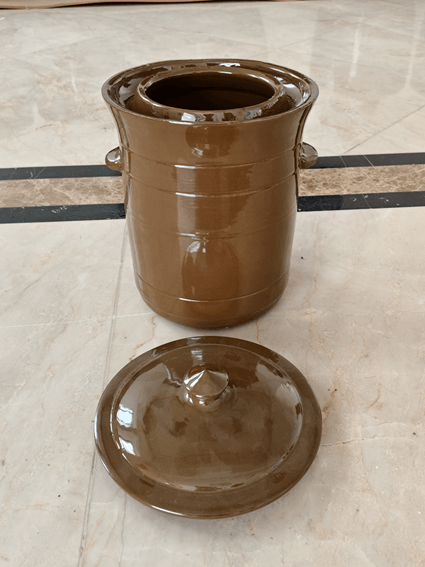How to Make a Clay Pottery
This article will delve into the common types and manufacturing processes of clay , introducing you on how to make a clay pottery
.
Types of Clay Pottery
Coarse pottery: it is a type of pottery that is fired at a relatively low temperature. Its raw materials have high impurity content and coarse particles. So, the finished product has a high water absorption rate and a loose texture. Coarse pottery has a rough texture. Its surface is rough and often has handcrafting traces. Worker fire it at a low temperature, which makes its body structure loose with many pores. This gives it excellent air permeability and water absorption. This feature makes it work very well as containers.When used as flowerpots, it helps regulate soil moisture and prevents plant roots from rotting. When used as tea sets, it can absorb the fragrance of tea and enhance the taste.

Fine potteries raw materials are more refined. After firing, it has a medium water absorption rate and a certain strength.The raw material of fine pottery is also based on natural clay. However, compared with coarse pottery, its clay undergoes more refined screening, wash and processing, removing most of the sand particles and impurities. As a result, the particles are finer and the purity is higher. The raw materials of fine pottery are finely processed, and it is fired at a high temperature. So, its body structure is relatively dense, and its surface is smooth. Fine pottery has a unique double-pore structure. This structure gives it excellent air permeability and adsorption properties. Thus, it is an ideal material for making tea sets and tea cans.
Steps for making A Clay Pottery:
Knead the clay:
Workers put natural clay into a clay machine. They remove impurities and air bubbles by means of mechanical stirring and kneading.Next,workers place natural clay in a clay machine. They remove impurities and air bubbles through mechanical stirring and kneading. During this process, workers need to add clear water. This helps restore the clay’s viscosity and toughness.
Shaping :
After initial treatment, the clay slurry enters the shaping stage. workers use pottery molds to roll-form it, ensuring the clay potteries have uniform wall thickness, smooth lines and a consistent shape.

Trimming
After the clay pot takes its initial shape, it needs to go through the trimming process to refine the details. Cutting off the excess clay, corrects the uneven parts, and makes the surface of the potteries smooth and regular.

Drying :
The trimmed clay pot needs to be naturally dried to evaporate the internal moisture, which takes about 7 days. The drying process should be gradual to avoid cracking due to excessive water loss.

Glazing :
Apply the pottery glaze evenly on the surface of the clay blank. There are a variety of glaze color options, and customers can choose according to the options we provide.

Firing :
Put the glazed clay potteries into a kiln and fire it at high temperature to turn it into a jar. At a high temperature of 1100 – 1370℃, the internal structure of the clay changes, and the ceramic glaze melts accordingly. After cooling, Forming hard pottery products
.
To sum up, we has detailed the process of making clay pottery, from kneading the clay to remove impurities, shaping with molds, trimming to refine details, drying to evaporate moisture, glazing to add color, to firing at high temperatures to form a hard and dense clay potteries.

